This year for the first time, the Best Human Rights Books list is published quarterly. This is the second quarterly list – click here to view the first. With so many great books out there, the end-of-year list was simply getting too long – however, there will still be a year’s-best list at the end of 2018.
This list consists mostly of books published in the second quarter of 2018, from April through June. There are two books from late 2017. All publication dates are for the US editions. The 15 titles on the list are about and/or set in China, Iraq, Iran, Israel/Palestine, Russia (2), Rwanda, Syria, Uganda, the United Kingdom, and the United States (5). Two books are global in scope. There are both fiction and nonfiction books on the list.
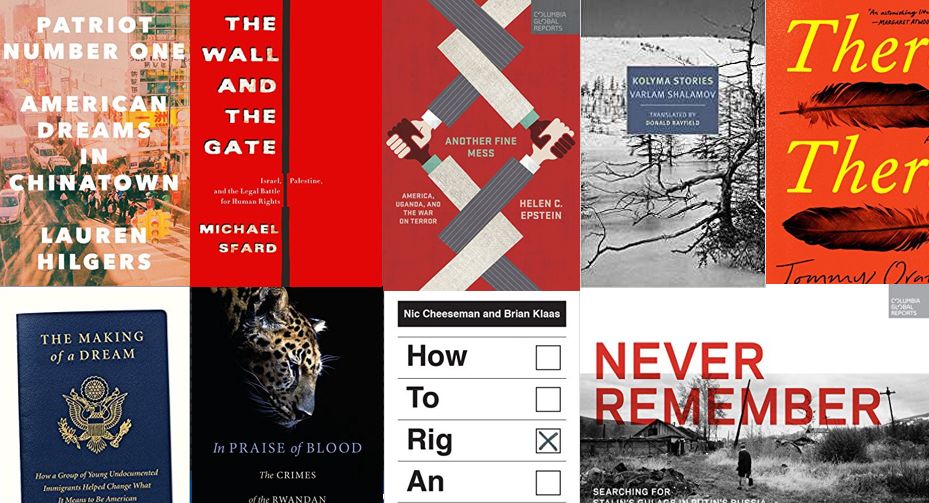
Below the list of 15 titles, there is a list of 13 other books that I have not had the chance to read but, if I had, would probably make the best-of list as well. All book links below bring you to the Book Depository’s website. Buy a book through a link and five per cent of the order will go to the non-profit Hong Kong Free Press, a very worthy cause.
Patriot Number One: American Dreams in Chinatown, Lauren Hilgers (Crown)
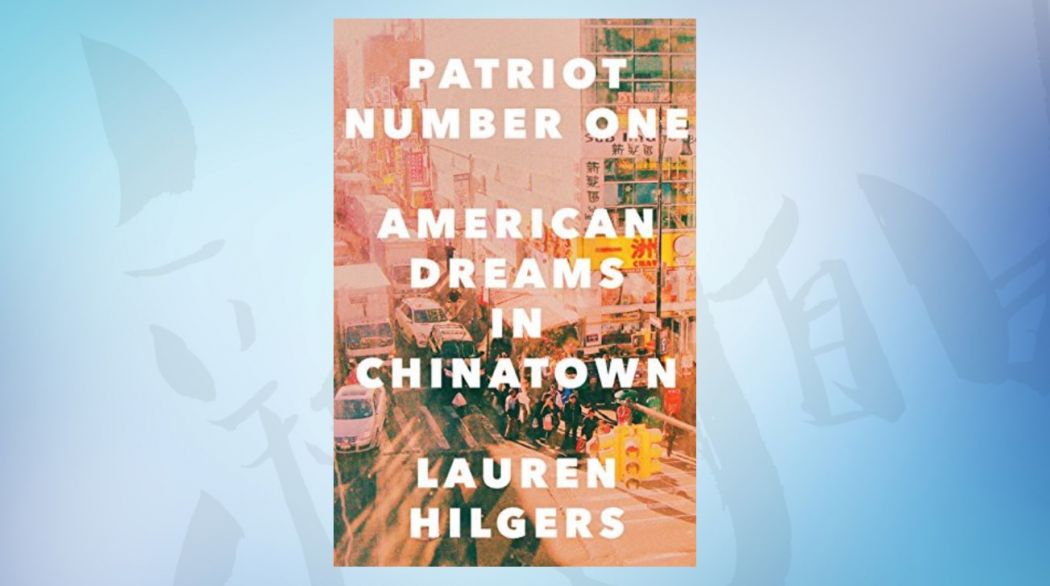
At first, I wasn’t too keen on the title, but when I learned it was the original name of Wukan uprising leader Zhuang Liehong on his social media group, it made perfect sense, encapsulating a paradox at the heart of the story. On the one hand, Zhuang is a fully committed patriot to his home village of Wukan in Guangdong, to the extent that he puts himself at considerable risk in leading a movement against corrupt government officials.
On the other, he and his wife, Little Yan, make the heartbreaking decision to flee an impending government crackdown on Wukan and move to the US, where they endure the travails of applying for political asylum, being separated from the toddler son left behind with their parents in China, and trying to make lives for themselves in a bewildering new country that isn’t exactly the beacon of freedom on the hill that Zhuang, the idealist of the two, imagined.
Zhuang and Little Yan live life suspended between these two places, the US and China, in the Chinese enclave of Flushing in Queens, New York, and there is no book that gives better insight into that community.
Most of the story focuses on what happens to the couple after they get to the US, and in that sense, it is as much about immigration and exile as about dissidence. Therein also lie its significance and uniqueness. There are not many books about the experience of Chinese dissidents in exile.
By all accounts, it is not an easy life. They face the huge challenge of remaining relevant in China while making new lives for themselves abroad, and often seem to succeed at neither.
But the book is also about what happens in Wukan, and it is the fullest telling of that story to appear so far in English. Wukan is an almost parable-like tale of what happens in China today when the aspirations of the people come up against Communist Party dictatorship.
The Making of a Dream: How a Group of Young Undocumented Immigrants Helped Change What It Means to Be American, Laura Wides-Muñoz (HarperCollins)

This book’s clear strength is its depiction of the lives of the undocumented young immigrants to the United States who have been leading the fight for immigrant rights generally and the DREAM Act in particular. Their struggle is long, hard, tumultuous, and on-going.
Though there is widespread agreement that the US needs comprehensive immigration reform, it has so far proven politically impossible. Many sectors of the US economy depend on immigrants, 11 million of whom are undocumented: “many of the nation’s largest industries — farms, hotels, restaurants, in-home health and child care, construction — increasingly thrive off the muscle of undocumented workers”.
But there is also strong anti-immigrant sentiment, and the immigration system is a dysfunctional mess.
The young DREAMers are part of a much larger movement for immigrants’ rights. Over the past decade one of the constant debates within the movement has been about whether to focus on the holy grail of comprehensive immigration reform or to try for something more attainable, such as allowing the one million people who came to the US as undocumented child immigrants, the DREAMers, to stay and get on a path to citizenship.
But even that legislation failed to pass in Congress, pushing President Obama to issue DACA guidelines by executive order, something he had been reluctant to do. Now Trump has allowed the two-year-renewable guidelines to lapse, and unless Congress acts, the DREAMers will be pretty much back to square one.
Though no legislation has passed, a testament to the success of their movement is that support for the DREAM Act cuts across the political spectrum, with four of five voters backing legislation to allow undocumented immigrants brought to the US as children to remain and apply for citizenship.
In spite of the arduous struggle, the book has an underlying tone of optimism, as do many of the young activists profiled. Because of the changing demographics in the US there appear to be grounds for optimism when it comes to immigrants’ rights, but it won’t come easy.
With its combination of knowledge of the issues of immigration, an overview of the immigrants’ rights movement, and tracking the lives of a wide cast of characters involved in it, this adds up to one of the best books in a while about a rights movement and activism.
The Wall and the Gate: Israel, Palestine, and the Legal Battle for Human Rights, Michael Sfard (Metropolitan)
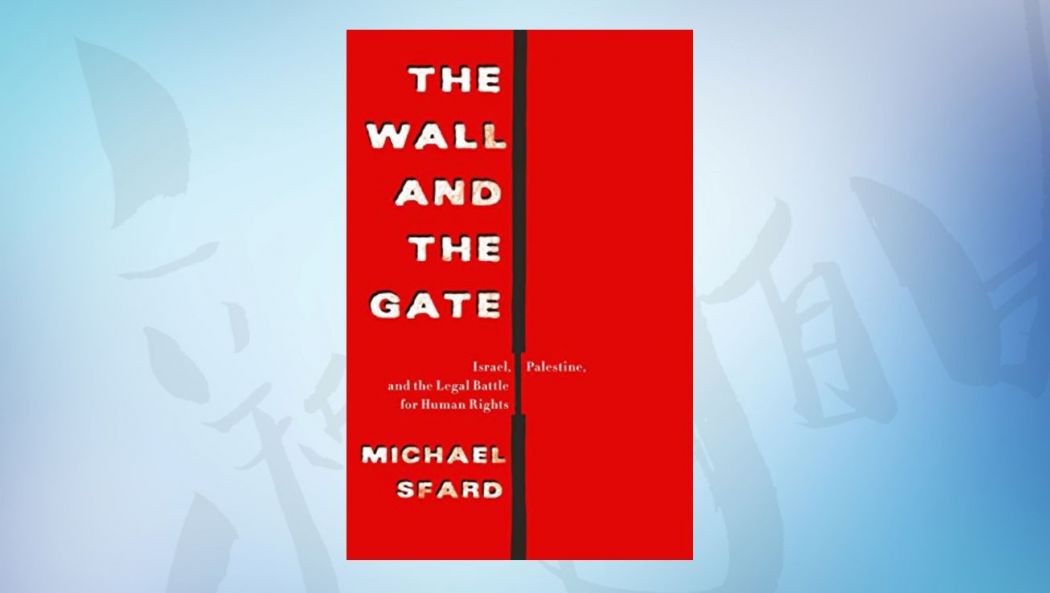
Michael Sfard is an Israeli human rights lawyer who has represented Palestinians in Israeli courts for decades. He is part of a group of such lawyers, and this book is his history of their work.
The title is from an anecdote: Sfard is discussing how to deal with Israel’s at-the-time new separation wall in the West Bank with Palestinian farmers cut off from their land by the wall. Sfard, his colleagues and Israeli human rights NGOs take the position that the wall itself is illegal and must be dealt with on that fundamental basis.
How long, the farmers ask, will it take to challenge the wall in court? Maybe two or three years, Sfard replies. Then could you ask the IDF if, in the meantime, they could make a new gate in the wall so we can reach our fields? the farmers ask.
A new gate would help the farmers regain access to their livelihood but also risks legitimizing the wall and being used to portray Israel as cognizant of Palestinian needs. That, Sfard says, is the crux of the contradictory nature of his legal work to defend the rights of Palestinians in the occupied West Bank.
The problem is that the whole occupation and the ways it is carried out are illegal yet the Israeli High Court has time and again upheld Israeli policies. To engage with such a system is to legitimise it.
At the same time Sfard and his colleagues, while not successful in challenging the illegal underpinnings of the occupation, have frequently succeeded in defending their individual clients’ rights.
This is a brilliant study by a “human rights insider” of the ambiguities, debates, strategies and actions of his and other human rights lawyers’ work.
Just to take one example, for years they fought deportations from the Occupied Territories as being against both international and Israeli law. They continually lost, but in losing, arguably, they ultimately won. The last deportation was also the biggest, of over 400 members of Hamas back in the 1980s, but the lawyers and their allies had by that point ensured that the numerous costs the Israeli government paid to deport were so high that it ceased the practice.
A victory? Certainly of sorts, but then again, it appears small against the backdrop of the on-going injustice of occupation. There are separate chapters on some of the key policies the human rights lawyers have fought in the courts, forced deportations, settlements, torture, the separation barrier and unauthorized outposts.
And by the way, Sfard ends up acceding to his clients’ desire and requesting that the Israeli government install a new gate in the separation wall. This leads to results he could not have foreseen….
In Praise of Blood: The Crimes of the Rwandan Patriotic Front, Judi Rever (Random House Canada)

This book tells the story of the numerous crimes against humanity, if not outright genocide, perpetrated by Paul Kagame and his Rwandan Patriotic Front.
The Hutu genocide against the Tutsis in 1994 has consistently been the focus of foreign observers of Rwanda, but Kagame has used that genocide and the world’s guilty conscience over failure to stop it to cement his dictatorial grip on power,.
At the same time he has allied himself closely with the US, the UK and other Western democracies. No matter what he does, they continue to fund his regime, and in fact have frequently praised him as a model African leader. And what are those crimes exactly?
This book doesn’t focus on the more mundane repression of day-to-day dictatorial rule in Rwanda, the subject of Anjan Sundaram’s excellent Bad News. The mission of In Praise of Blood is to provide evidence of the more outrageous and massive attacks on civilians.
There are the mass genocidal killings of Hutus during the invasion of Rwanda in 1994; more mass genocidal killings under the guise of counterinsurgency committed mostly from 1994 to 1997, the years after the RPF came to power; the 1996 invasion of Congo and mass killings of Hutu refugees and looting of natural resources there; and the targeted assassinations of opponents abroad.
If that appears a torrent, it is, and one effect this book may have on the reader is that, at moments, it becomes hard to breathe. If it doesn’t provoke indignation at Western support for such a despicable, criminal regime, nothing will. Indeed, apart from the outstanding documentation the book provides, its other great value is to provide insight into the process of researching it.
Rever writes about the regime’s threats against her and the toll her investigations over many years took on her family and personal life. Reading it, I was reminded of the stories of human rights defenders in China: in many parts of the world, rights defence and truth-telling come with risks to physical and mental health.
Lastly, it must be said, the book is definitely in the running for bad cover of the year: Not only does it have nothing to do with its subject, it is part of that old tradition of equating Africa with big wild animals. Luckily, what’s inside is much much better.
Another Fine Mess: America, Uganda, and the War on Terror, Helen Epstein (Columbia Global Reports) published September 2017
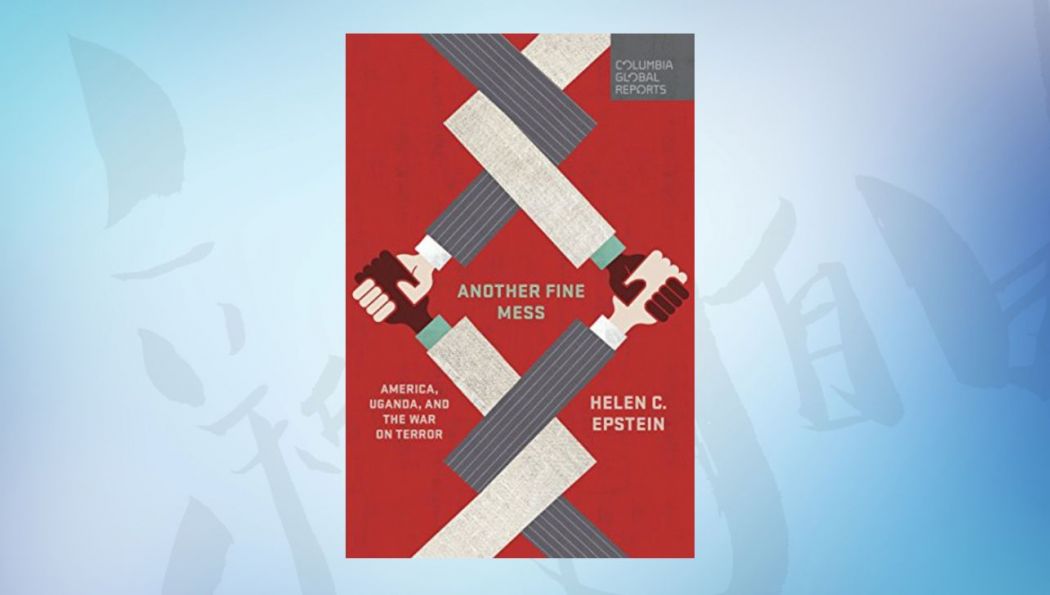
This is the story many in Uganda wish the world knew about the dictator who has been ruling them for more than 30 years, Yoweri Museveni, and about U.S. complicity in and support for his dictatorship because it is seen to serve U.S. security interests in Africa.
It’s been years since I lived in Uganda, but this book got my blood boiling all over again. It’s also one of the better recent books on democracy, or rather, its betrayal.
Democracy has been declining in many places almost since its “triumph” in the 1990s with the fall of the Soviet Union. Uganda is Exhibit A. Far too often, when the West had to choose between democracy and human rights on the one hand and trade and “security” on the other, it chose the latter, all the while rhetorically promoting democracy.
Uganda is where I completely lost faith in the so-called development industry. It plays a huge role there, with most of the money coming from the West. The huge amount of aid has the effect of supporting dictatorship, which can steal much of the aid and divert the funds it would otherwise have to spend on Ugandan people to warring against the regime’s enemies.
Museveni has perfected the technique, and it’s astounding to consider how much regional havoc such a small country has wrought: war in northern Uganda, invading Congo and supporting proxies there, supporting wars in Rwanda and southern Sudan, sending troops to Somalia.
In all, millions have died in these wars, which Museveni has used to enrich himself and his cronies and to cement his grip on power. He is also relentless in his oppression of political enemies within Uganda, using a variety of dirty tricks, as well as torture and assassination.
One of the anecdotes told here that is famous in Uganda is of the Danish ambassador’s wife being surprised one morning by a man hopping over the wall around her home, having escaped from the house next door, which, unknown to her, the government was using as a secret detention and torture centre.
Epstein has consistently been one of the best reporters on Uganda, and East Africa and Congo as well. She doesn’t pussy-foot around this story, driving home just how awful a supposed Western ally like Yoweri Museveni is. And how distorted Western perspectives are, up in arms about Uganda’s proposed anti-LBGT laws but hardly disturbed at all by decades of dictatorial oppression and kleptocracy.
How to Rig an Election, Nic Cheeseman and Brian Klaas (Yale University Press)
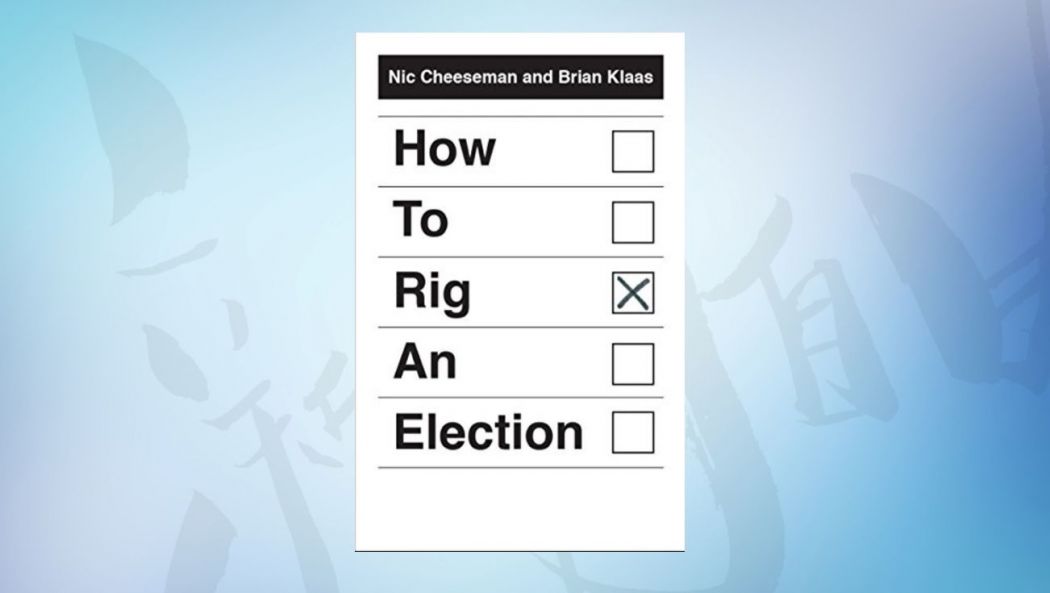
These two writers, who have been studying elections around the world for years, begin, “The greatest paradox of our time is this: There are more elections than ever before and yet the world is becoming less democratic.”
Twice as many elections are held today as 30 years ago — an astounding 70 per year — but a fair number of those are what the authors classify as counterfeit. This book focuses on those “counterfeit democracies”; that is to say, neither established democracies like the US nor full dictatorships like China, but the large number of countries in the middle which hold elections that are far from free and fair.
A key finding is that authoritarian governments that hold compromised elections are more likely to retain power than those that don’t.
Cheeseman and Klaas divide rigging into six main categories, with a chapter on each: gerrymandering, vote-buying, repression, hacking the election, stuffing the ballot box, playing the international community. This structure provides a fine taxonomic overview and reads like a quick, easy guide, interspersed with many examples from their years of research.
The book should help general readers to identify the various actions taken by authoritarian regimes to undermine electoral integrity. For specialists, the book concludes with excellent recommendations for improved election monitoring. Definitely one of the best of the recent crop of books about challenges and threats to democracy.
Kolyma Stories, Varlam Shalamov, translated by Donald Rayfield (New York Review of Books)

Shalamov somehow managed to survive 14 years in the Soviet gulag, from 1937 to 1951. After his release, he began to write these stories and continued for the next quarter century. The stories could not be published in the Soviet Union. They were disseminated as samizdat and began to be published in Russian in the West in the mid-60s.
The first faithful translation of a selection of the stories appeared in English in 1980. Now, for the first time, all six books of stories will appear in two volumes in English. This is the first; the second will be published next year.
The semi-autobiographical stories are unadorned Chekhovian vignettes from hell, about what happens when human beings are stripped of even the most basic dignity and rights. They are about hunger, death, oppression, humiliation, degradation.
They are, of course, about a very particular place, the Soviet gulags, but as in all great literature, they have a universal quality. They are about what human beings are capable of doing to other human beings under certain conditions, and in this sense, they serve as an eternal warning.
I was stunned by their penetrating simplicity and immersed in a world so different and distant from my own. As extreme as the situation of Soviet political prisoners in labour camps was, it feels quite familiar insofar as one still doesn’t have to look far to see human beings being brazenly exploited and humiliated.
Donald Rayfield is the stories’ translator and, with his deep knowledge of Russian literature (his biography of Chekhov is a classic in its own right), Kolyma Stories could not have hoped for a better one. Here are two stories from the collection.
Never Remember: Searching for Stalin’s Gulags in Putin’s Russia, Masha Gessen, Misha Friedman (Columbia Global Reports)
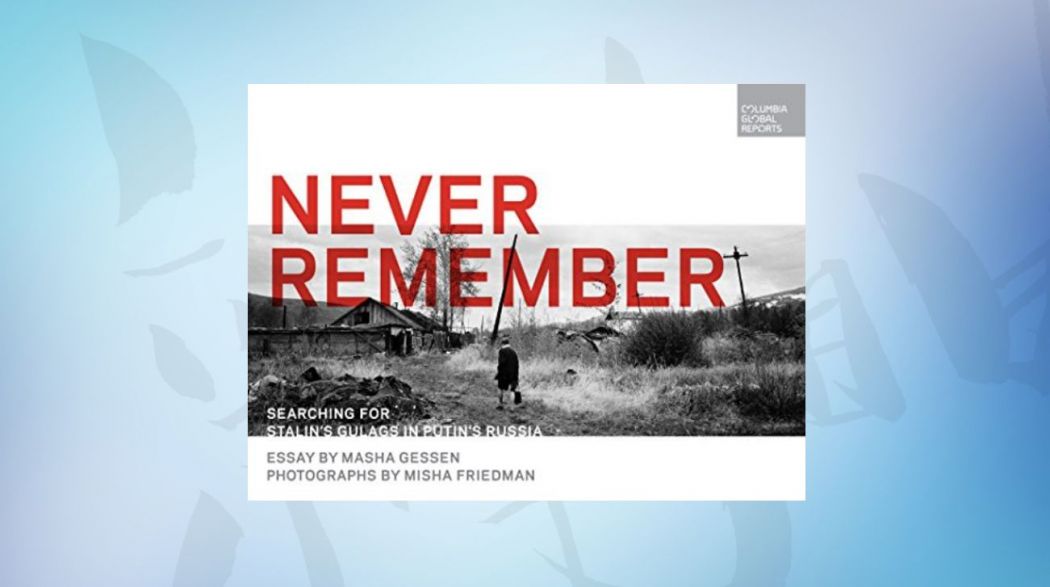
Friedman’s photographs of sites in Russia associated with the Soviet-era gulag, and Gessen’s essays, complement each other well. Many of the impressionistic photos show the sheer desolation and facelessness of the locations; there is little left but ruins.
Alone, the photos might not provide enough context for the viewer to grasp the significance of the images, but together with Gessen’s essays a sense of nearly unspeakable horror emerges: the utter void of morality, the evil of the totalitarian state, the quiet heroism of ordinary people.
Gessen tells of how, just after the fall of the Soviet Union, there was much interest in finding out about the full extent of Stalinist terror, and Memorial Societies arose all over Russia. As the 1990s went on, with economic hardship for many, and were capped by start of the Putin era, interest waned and official intimidation grew to the point where the government recently classified Memorial as a “foreign agent”.
Gessen’s stories and interviews are moving: two committed researchers who go to great lengths to undercover the truth, a daughter searching for her parents who were both executed, a former political prisoner who served in the gulag right up into the 1980s, two people who painstakingly reconstructed the Perm camp as a site of memory before the authorities elbowed them aside and took over, putting on exhibitions like how beds in the camp became more comfortable over the years as the economy grew.
Living in China, where the regime has a vested interest in covering up the truth of the tens of millions of people it has killed, I believe a country can’t be a normal, decent, civilized place unless it faces its own history, including the worst parts.
Germany has done this to a remarkable degree. Others, like Japan and the US, though they have much greater freedom of expression than Russia or China, still struggle to do so fully. When the Soviet Union killed its victims, it was confident they would disappear into oblivion. It’s a small gesture to disseminate their names and faces like tiny flags of justice.
There There, Tommy Orange (Knopf)
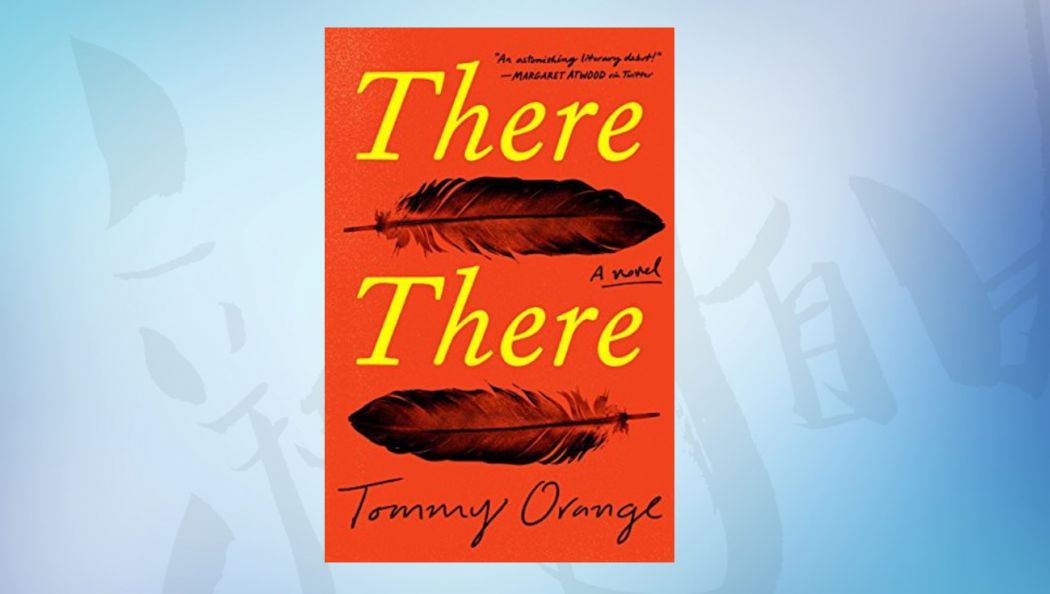
The title comes from a famous statement by the writer, Gertrude Stein about her hometown of Oakland, California: “There is no there there.” While the quotation is often used to disparage the city, what she really meant was that it was impossible to return to any essence in her upbringing there.
Orange’s story is set in Oakland, but as much as anything else the title refers to the characters’ search for their “Indian-ness”. What is it that makes them Native in this urban setting, given their people’s history of oppression and genocide in the US? Is there any “there there”? In one way or another, nearly every character in this wide cast faces that question.
The structure of the story reminds of Marlon James’ A Brief History of Seven Killings in that it is told by and about multiple characters, and it revolves around an incident of violence to which they are all related in one way or another. In the case of James’ story, this is the attempted murder of Bob Marley; in Orange’s, the Oakland powwow, to which all of the main characters are headed.
One further similarity is that these structures are ambitiously used to portray a people: Jamaicans in one case, Native Americans in the other.
The picture that emerges in There There is recognizable to anyone with even minimal acquaintance with the lives of Natives in the US: poverty, violence, broken families, substance abuse, and all-around destructive behaviour towards self and other Natives.
Amidst that rubble, what does it mean to be Native and how can the identity be recovered with pride? One answer, of course, is through novels like this, and this novel’s power comes from the many voices and stories that emerge around that issue. The novel arguably also frays and stutters as the author tries to hold that massive structure together. Perhaps that is also the point: a people’s identity exists in cacophony, diversity and contradiction, not in some reducible, illusory unity.
Overall, this is a portrait of a people trying to contend with damage caused by historically traumatic assault on it by other groups of people; it is an interesting study and point of comparison for all historically traumatized peoples, from African-Americans to Chinese, Tibetans, Rwandans, Russians and many others.
Home Fire, Kamila Shamsie (Riverhead Books) published August 2017

Tidy and precise plot; beautiful prose; satisfying structure, taut and intricate; loosely modelled on Antigone, told in five parts, each narrated by a different character, each of the characters vividly depicted: it is not hard to imagine oneself into each of their perspectives, though a bit harder perhaps in the case of the adolescent English jihadi.
Then again, who hasn’t been foolish in youth? Just that, usually, one’s foolishness doesn’t lead to such catastrophe.
Home Fire’s themes also correspond to those of Antigone: vengeance, loyalty to family and country, civil disobedience, and defiance. Two sisters and a brother hardly knew their deceased father who was a jihadi of an earlier generation. After their mother dies, the elder sister, still a teenager herself, raises the two other siblings, who are twins.
Eventually, after supporting them for years, she goes to the US for a PhD.
The brother then falls under the influence of an ISIS recruiter and goes off to fight in Syria. The elder sister reports him to the police, which the younger sister regards as an unforgivable betrayal. She in turn dedicates herself wholeheartedly to securing her brother’s return.
He tells her that he has made a mistake and wishes to return to the UK, but the new Home Secretary, himself a man of immigrant Muslim background but regarded by many as anti-Muslim, has declared that those who become jihadis and are dual citizens of another country as well as the UK have in effect renounced their UK citizenship.
The younger sister seduces the Home Secretary’s son in the hope of eventually influencing the Home Secretary. Ultimately, she engages in an act of very public protest.
Home Fire, a novel about the balance between security and rights, shows empathy for all concerned.
The Beekeeper: Rescuing the Stolen Women of Iraq, Dunya Mikhail, translated by Max Weiss (New Directions)
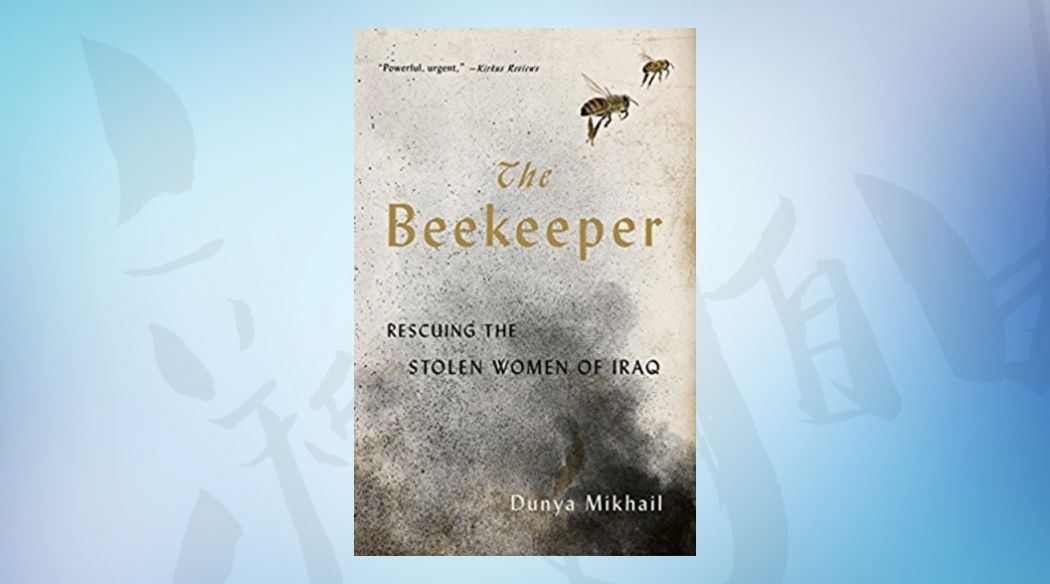
The main value of this book is its focus on the eponymous beekeeper, Abdullah Saleh, and his mission to free Yezidi women and children captured and enslaved by ISIS. Much of the book is made up of his testimony.
He himself is a Yezidi. He tells one story after another of how captives escaped with the aid of his colleagues or were ransomed. Interspersed are stories about and told by former captives themselves.
Their tales are harrowing and horrific, to put it mildly, showing the depths of human depravity, but the heroism of Saleh and the others with whom he works as well as the women’s determination to survive actually give the book a somewhat heartening tone.
Mikhail is originally from Iraq, and fled Saddam’s terror in the 1990s. She initially communicates with Saleh by phone from the US and ends up going to Iraq to meet him and some of the women. A good companion to last year’s excellent With Ash on Their Faces: Yezidi Women and the Islamic State by Cathy Otten.
The Wind in My Hair: My Fight for Freedom in Modern Iran, Masih Alinejad (Little, Brown, and Company)
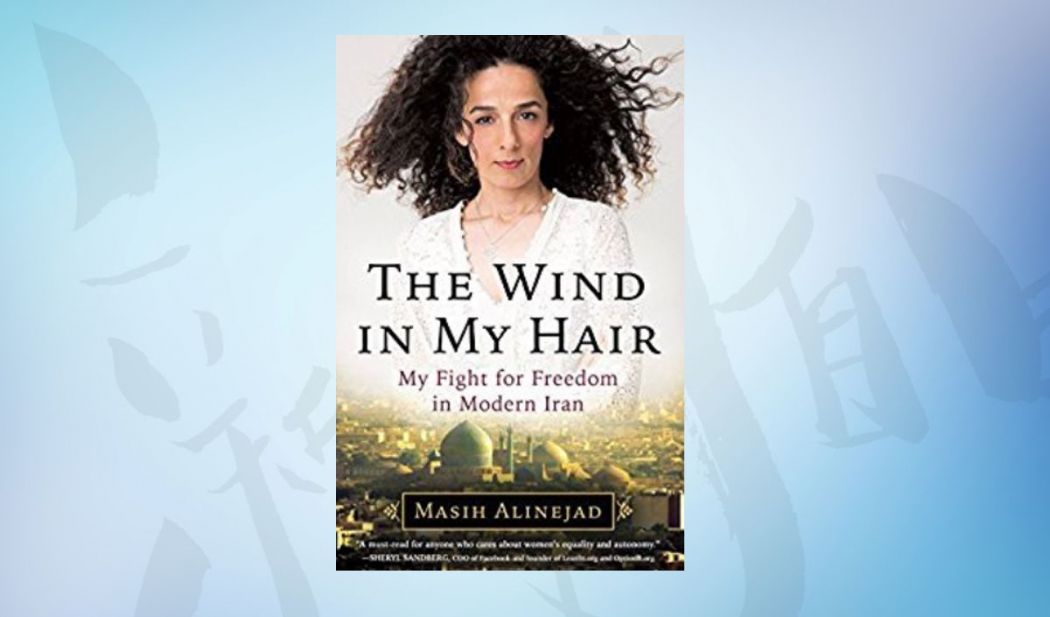
This is Alinejad’s memoir about her fight for women’s rights in Iran, in particular against forcing women to wear the hijab. She goes back to her origins, growing up in a poor family in a provincial town, and this in itself makes her different from many of the Iranian women whose voices have been heard in the West. They tend to come from relatively privileged socioeconomic backgrounds in Tehran.
Alinejad’s humble origins, as well as the fact that her parents were fervent supporters of the revolution, makes it all the more remarkable that she started rebelling at such a young age — she was 19 when first arrested, and sentenced to five years in prison and 74 lashes, though the sentence was suspended for three years.
She was pregnant at the time. Her husband eventually divorced her and gained custody of their child, whom she hardly saw for a decade. In fear of another arrest, she left Iran for the UK, where, in 2014, she posted a photo of herself running down the street with the wind in her hair, igniting the My Stealthy Freedom movement back in Iran.
She now lives in the US but hopes to return to Iran, among other reasons to see her family again.
Some might see her as having a fixation on the hijab, to the detriment of the fuller panoply of women’s rights issues in Iran, but she has fought for them all; it’s just that she sees the hijab as the very root of the systematic oppression of women — as the sub-title says, she’s fighting for freedom. An excellent interview with the author.
The Displaced: Refugee Writers on Refugee Lives, edited by Viet Thanh Nguyen (Abrams Press)

This anthology is obviously intended to respond to the political moment in the US, where a certain segment of the population is egged on by opportunistic politicians to indulge in anti-immigrant sentiment even as the country becomes ever more diverse. These essays provide insight into the motives and difficulties of refugees who have come to the US (and in a few cases, the UK) over recent decades.
Hmong, Latin Americans, Hungarian Jews, Soviet Jews, Pakistanis, Vietnamese, Afghans, Ethiopians, Indians, Ukrainians, and Zimbabweans are represented here. Favorites of mine include the editor, Nguyen’s story of his own family, which he relates in the introduction, Alexander Hemon’s extraordinary story of the gay Bosnian refugee with the unusual name of Kemalemir, and the essays of Lev Golinkin, Marina Lewycka, and Joseph Kertes.
Not only is the collection an argument for better understanding of refugees but also for the ability of literature to encourage empathy with others different from ourselves. So deeply humane, the essays offer a vision of a world of diversity, pluralism, solidarity, tolerance and compassion.
Science Not Silence: Voices from the March for Science Movement, edited by Stephanie Fine Sasse, Lucky Tran (MIT Press)
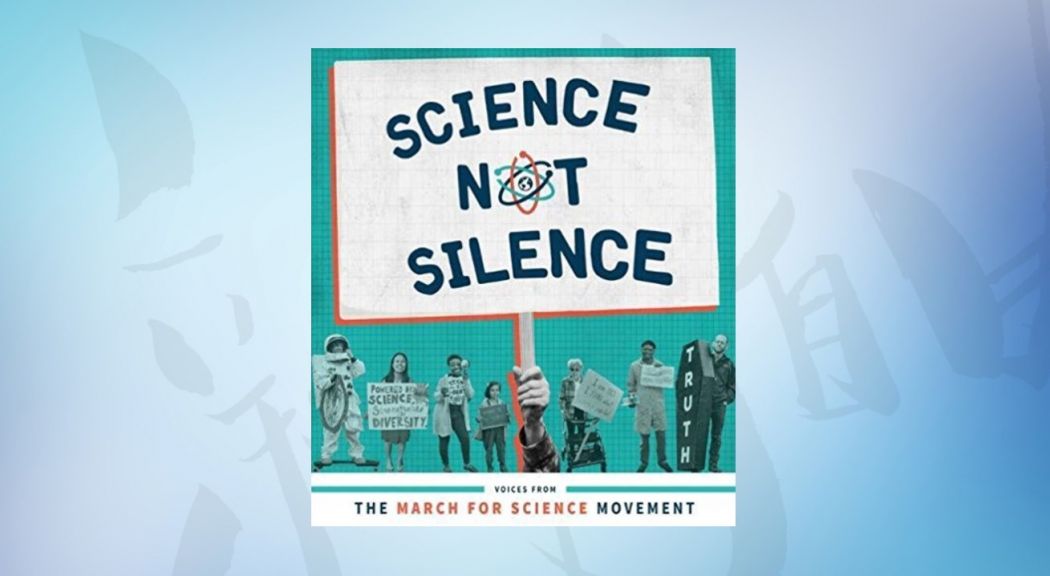
The Women’s March understandably got most of the headlines, but another movement spurred by the Trump victory was the March for Science, held on Earth Day, April 22, 2017 in Washington, DC and over 600 hundred cities around the world. Being a pro-science event, crowd science techniques were used to estimate that, in all, 1.07 million people participated.
The Women’s March’s corresponding text, Together We Rise, focuses more on the organizers and well-known personages. This collection is more grassroots, profiling the many ordinary people, scientists and others, who turned out. It’s brilliantly laid out and features striking photographs.
Though the rights dimension of the movement is not always prominently articulated, its main issues — the relationship between science and the common good and a demand for evidence-based public policy — clearly correspond to ICESCR Article 15, the “right of everyone… to enjoy the benefits of scientific progress and its applications.”
One can argue that the climate change denial industry in the US threatens that right, especially at the point where those opposed to policies based on scientific evidence have gained power. Another march was held this year in April, and March for Science emphasizes that it’s a movement and not just a one-day annual event.
Not Enough: Human Rights in an Unequal World, Samuel Moyn(Belknap/Harvard University Press)

Moyn provides a historical perspective on the relationship between the contemporary conception of human rights and what he variously terms “social rights”, social justice, and the socialist tradition stretching back to the French Revolution and the 19th century.
He devises contrasts such as between sufficiency (making sure everyone has enough) and equality (making sure there are not great disparities between people) and between rights and revolution, which serve as the book’s intellectual framework.
Another way one might conceptualize the distinction is between fighting for political power and fighting for the respect of basic legal and moral norms. In the light of this larger historical context, Moyn says that over the past two centuries there has been a competition between the forces arguing primarily for social justice, whether that means revolution or putting social rights at the heart of the rights project, and the forces presenting human rights as a minimalist project of reform mostly in areas of civil and political rights.
He asserts the latter has won out, at least for the time being, and that victory parallels the ascent of neoliberalism beginning from, by Moyn’s reckoning, the 1970s onward. He is interested in the question how it reflects on the human rights movement (primarily a few Western organizations) that it has had so little to say about the inequality brought by global neoliberal economic policies.
On the one hand, I sympathize with Moyn’s critique of the movement and of how human rights have been conceptualized, but on the other, I find it often too broad-brush and generalized, his perspective too Western and too focused on governmental actions, intellectuals and a small sampling of rights organizations.
While indeed there should be a greater emphasis on economic and social rights, the question is at what point does it become unrealistic and unfair to expect the human rights movement to shoulder the burden of opposition to unfair economic policies?
To a large extent, this is a matter of shifting political power. A wider critique involving, for example, progressive and leftish political parties, the labour movement and social movements such as the World Social Forum might be more apropos.
The book is usefully provocative but at times perhaps somewhat misleading.
Other notable books
I haven’t gotten around to reading the following books. If I had, many would probably be on the list above. Samples and reviews lead me to assert confidently that they are worthy of attention.
Rooted Cosmopolitans: Jews and Human Rights in the Twentieth Century, James Loeffler (Yale University Press)
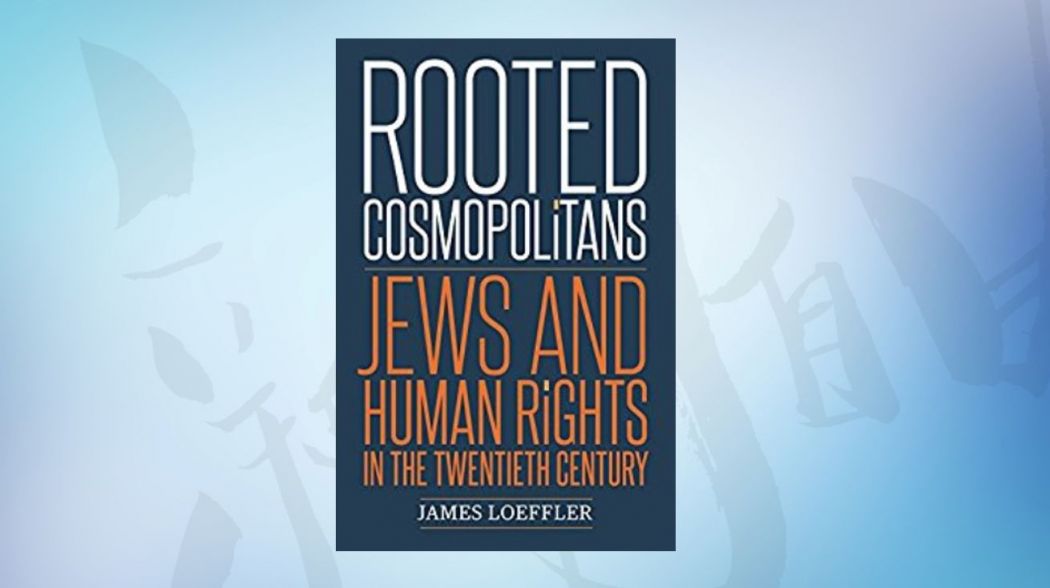
Over the course of the twentieth century, Jews have had an intimate connection with both the philosophy of and advocacy for human rights, at least until recently. This has to do with their long history as an oppressed group and there are also elements of Judaism which bear resemblance to ideas at the heart of the universal human rights project.
The structure of the book, divided into three parts, says a lot about the story it tells: emergence, convergence, divergence.
Central to the book are the stories of Jews who have played an integral role in developing the international human rights system over the past century. There is Hersch Zvi Lauterpacht whose story was also central to Philippe Sands’ East West Street; Jacob Robinson, who played an integral role in the UN Commission on Human Rights; Peter Benenson, who founded Amnesty International; and Jacob Blaustein, a confidant of Harry Truman and a proponent of universal values.
Some of these human rights advocates were also Zionists who saw no conflict between their Zionism and the struggle for universal human rights.
As Daniel Shulman says in his excellent review, “…one can’t help but notice how the Jewish fight for rights as a national minority within rabidly nationalist Central and Eastern Europe merged, after an unthinkable catastrophe, with the struggle for a Jewish nation-state in Palestine that now, 70 years later, discriminates against its own Arab minority within the Green Line (the pre-1967 border) and savagely persecutes millions of Palestinians in the occupied territories.”
Yellow Negroes and Other Imaginary Creatures, Yvan Alagbé, translated from the French by Donald Nicholson-Smith (New York Review Comics)
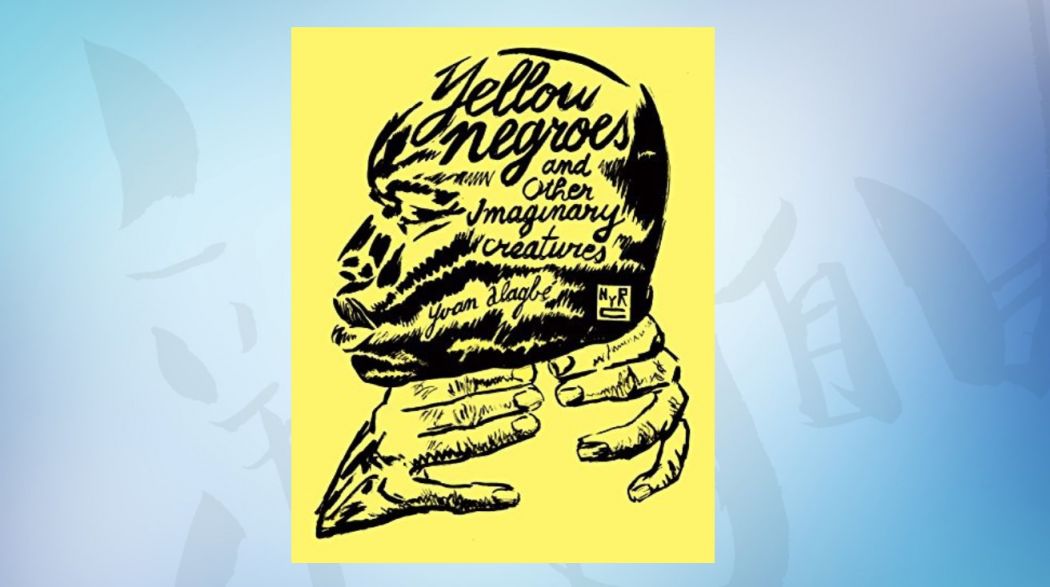
Yvan Alagbé is known as one of the best comic book artists of France. This handsome book presents seven of his stories, drawn between 1994 and 2011, for the first time in English. The stories, in black-and-white, are of race, immigration, oppression and exploitation.
Love is often depicted as a kind of touchstone that brings all of those potentially combustible other issues to the surface. The first story, for example, now considered a classic, depicts the lives of undocumented migrant workers in Paris: Alain, a Beninese immigrant, struggles to protect his family and his white girlfriend, Claire, while engaged in a strange, tragic dance of obsession and repulsion with Mario, a retired French Algerian policeman. An interview with Alagbé.
Authoritarianism and the Elite Origins of Democracy, Michael Albertus, Victor Menaldo (Cambridge University Press) published in February
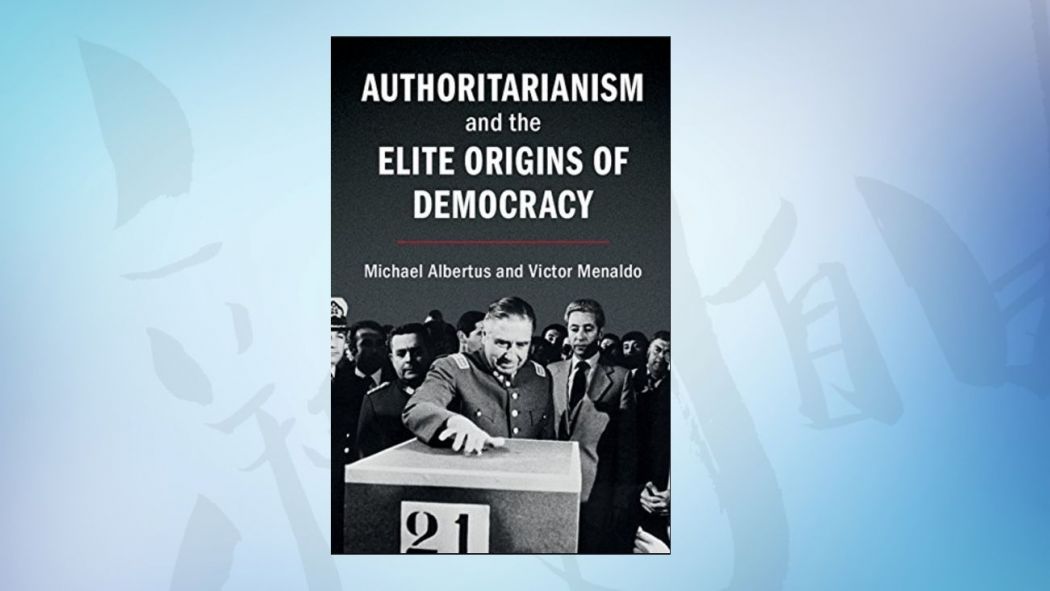
A country’s transition from dictatorship to democracy is often depicted as revolutionary, but this book reminds that the post-dictatorship dispensation is often strongly influenced by the departing dictators. One of the most pressing questions is whether the country manages to get out from under that shadow to develop a democracy that does not favour elites.
The study is of value for two reasons in particular. The first is that it itemizes the tools outgoing elites use to determine the political system that follows them, such as electoral system design, legislative appointments, federalism, legal immunities, constitutional tribunal design, and supermajority thresholds for change.
The second is the detailed case studies of Sweden and Chile, one having successfully made the transition from elite rule to popular democracy, the other having shown promise but the jury is still out.
The book seeks to explain why some democracies manage to become more egalitarian societies while others get stuck in transition, become counterfeit democracies, or remain rigged in favour of the few.
Make Trouble: Standing Up, Speaking Out, and Finding the Courage to Lead, Cecile Richards with Lauren Peterson (Touchstone)
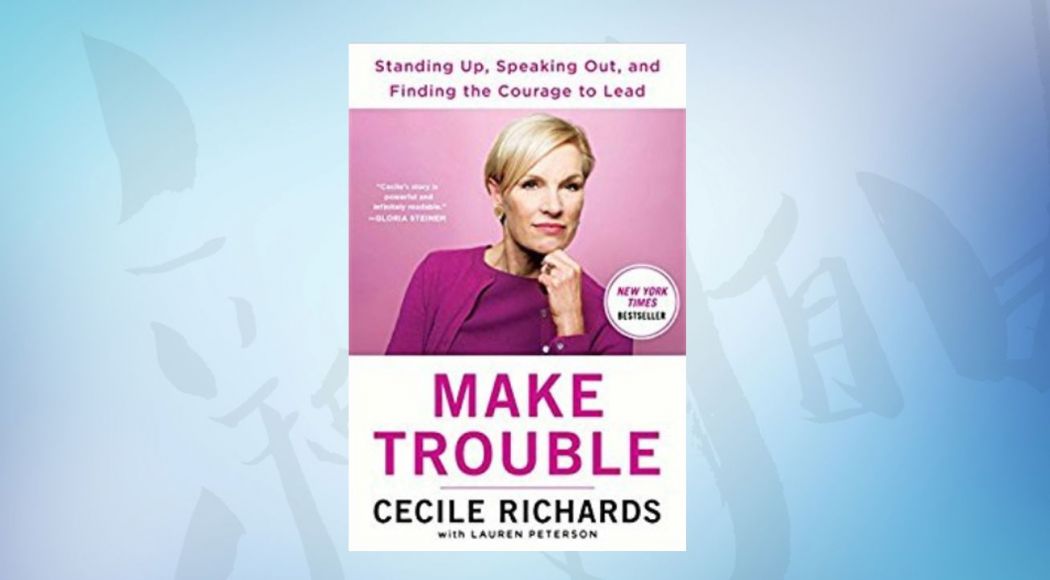
Cecile Richards is the outgoing president of Planned Parenthood, the US organization dedicated to ensuring women’s reproductive rights and providing related medical care.
Planned Parenthood has been one of the organizations most demonized by political conservatives in the US, and while its services are widely used and supported, many of its most steadfast opponents have prospered politically by attacking it.
This is Richards’ memoir about a life in activism and political organizing. Before her 12 years at Planned Parenthood, she was a labour organizer and an assistant to Democratic congresswoman Nancy Pelosi.
While pitched as a “professional troublemakers guide for young activists”, as Katha Pollitt put it in her review, the book focuses more on the personal than the issues and strategies of the many movements and issues in which Richards has been involved.
The Sun Does Shine: How I Found Life and Freedom on Death Row, Anthony Ray Hinton with Lara Love Hardin (St. Martin’s Press)
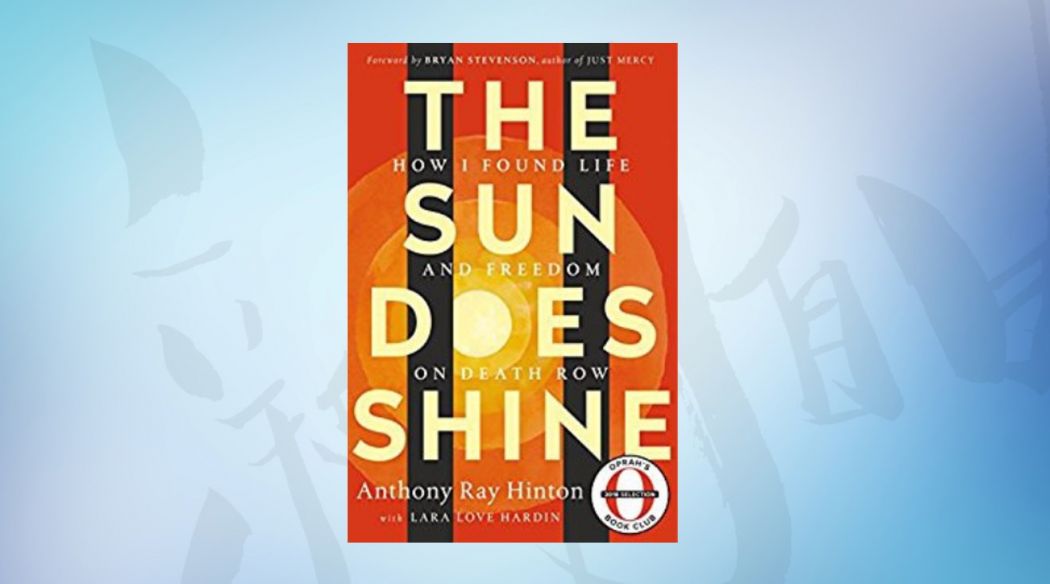
In 1985, Anthony Ray Hinton, black and poor, was arrested for murder in Alabama. He was eventually sentenced to death, though he knew he was innocent. This story is not primarily about his unfair and error-ridden trial but about his 27 years on death row, during which time 54 of his fellow inmates were executed.
He was eventually exonerated and released in 2015, not least thanks to the help of civil rights lawyer Bryan Stephenson (also author of the excellent Just Mercy). A good article about Hinton’s story.
Barracoon: The Story of the Last “Black Cargo”, Zora Neale Hurston(Amistad)

By the revered novelist Zora Neale Hurston, Barracoon was written in the 1930s when she was still unknown. She never managed to get it published in her lifetime, which is why it appears now for the first time. It is her transcription of the story of Cudjo Lewis, one of the last known survivors of the Atlantic slave trade.
Based on two visits she made to him in 1927 and 1931 at his home in Plateau, Alabama, when he was already in his late 80s, it is his story of capture in Africa, transportation to the US, and years of slavery until emancipation in 1865.
The Infernal Library: On Dictators, the Books They Wrote, and Other Catastrophes of Literacy, Daniel Kalder (Henry Holt and Co) published in March
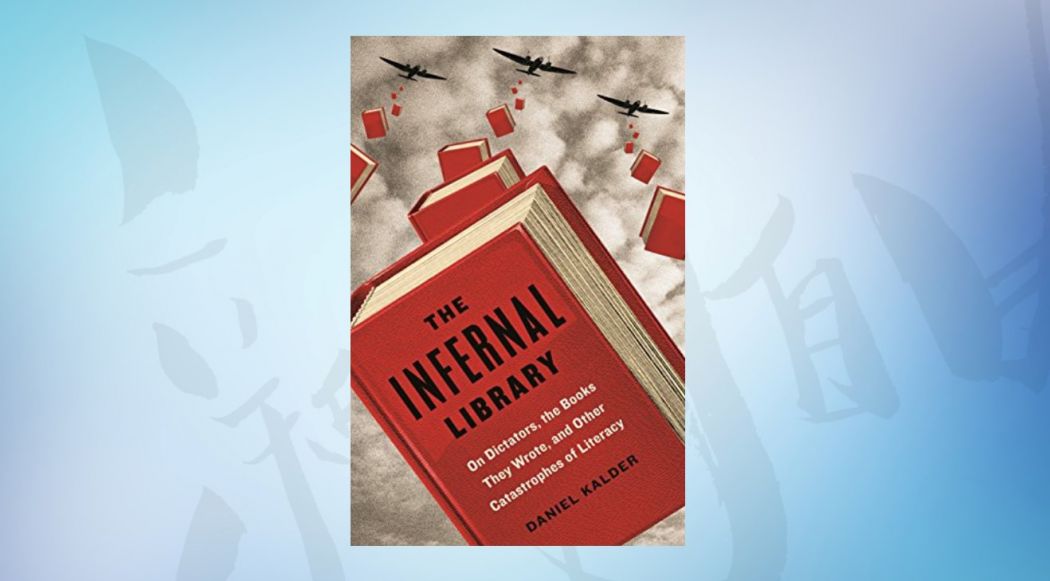
A survey of “dictator literature” in the 20th century, featuring chapters on Lenin, Hitler, Mussolini, Mao, Khomeini and more. If that hardly sounds appealing, I couldn’t agree more.
Kalder’s point is that it seems that we are coming around to a historical moment not entirely unlike the ones in which these dictators appeared. For that reason it is useful to review their ideas as well as how they presented them in writing.
Kalder notes that the most recent batch of dictators-and-wannabes appear not nearly as well read as those represented here. This could be a sign of the demotion of the written word: once central to the dissemination of views, now it is at best secondary.
It’s hard to think of people like Xi, Putin, Trump, Erdogan, Modi, Duterte and Maduro as particularly literate or interested in projecting their image or ideas through the written word. But as Kalder’s study indicates, we need to take the ideas of these people, who often appear as little more than buffoons and bullies, seriously.
Human Rights: Moral or Political?, edited by Adam Etinson (Oxford University Press)
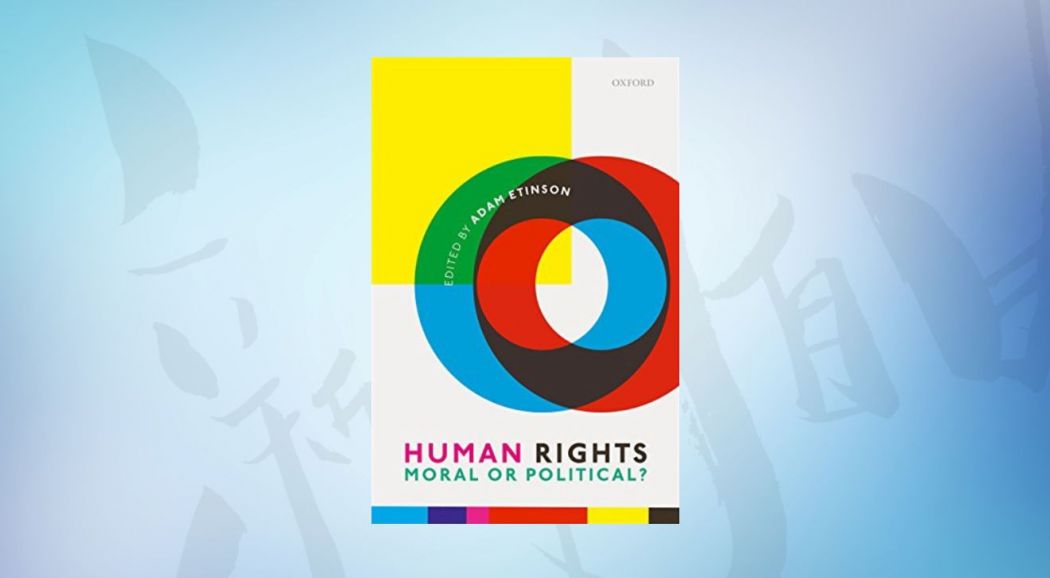
One of the great values of this collection of academic essays is the form it takes, that of a dialogue. There are 14 “base” essays on a variety of human rights issues of current relevance in academia, each followed by at least one and often two responses.
Most of the 31 essayists here are from a newer generation of scholars, which makes for often refreshingly new ideas and perspectives. The approaches are interdisciplinary and the range of issues wide, spanning moral, legal, political and historical angles on human rights.
For people like myself who are primarily activists, what goes on in the academy can often seem distant and beside the point, but this shows just how relevant the discussion can be. Unfortunately, at US$80 a pop, it won’t reach a general audience.
The Strike, Harvey Thomlinson (Lucid Play Publishing) published in January
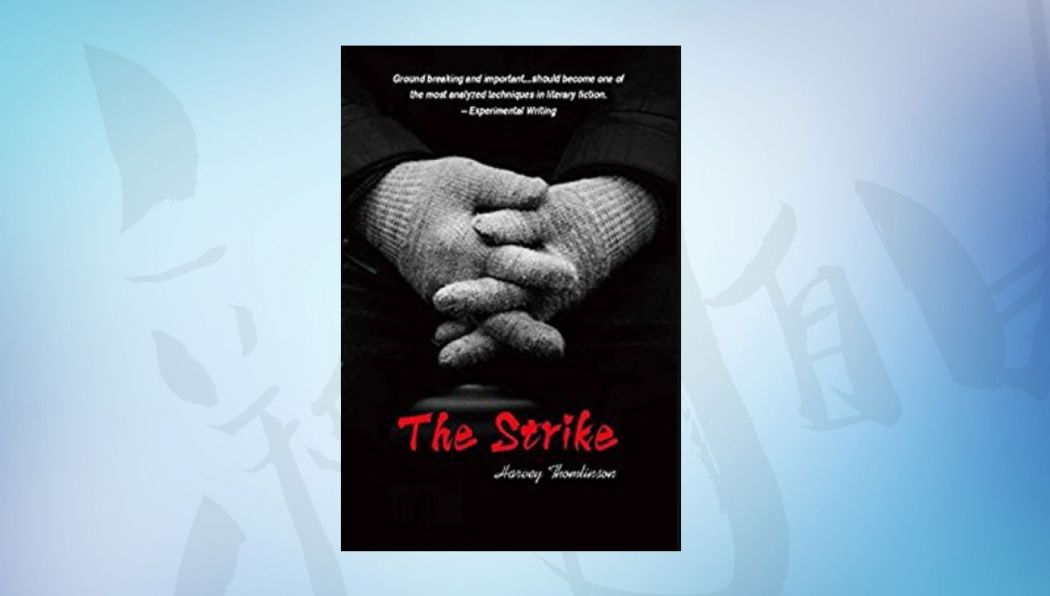
I’m frustrated that this novel is written in such an experimental way. There is such a straight-ahead good story to tell here, about the labour rights of people in northeast China, traditionally one of the country’s biggest industrial areas, as the economy transitions from planned and state-owned to a more uncertain future.
At the centre of the plot is a strike considered illegal by the authorities. This acts as a backdrop for crises in the lives of the main characters. Here is a recent opinion piece written by Thomlinson which shows his concern for workers’ rights.
The Road to Unfreedom: Russia, Europe, America, Timothy Snyder (Tim Duggan Books)

Snyder’s historical studies, Bloodlands and Black Earth, were exemplary. I’m a bit more skeptical of his attempt to apply lessons of history to the current historical moment. Last year’s On Tyranny was fine — short and simple, based as it was on a Facebook post. The Road to Unfreedom seems a bit more problematic. Sophie Pinkham’s excellent review expresses my reservations exactly.
More generally, I’m a little skeptical of the portrayal of Russia as the epicenter of modern-day authoritarianism. That award should surely go to China.
Dancing Bears: True Stories of People Nostalgic for Life Under Tyranny,Witold Szabłowski, translated from the Polish by Antonia Lloyd-Jones(Penguin Books) published in March
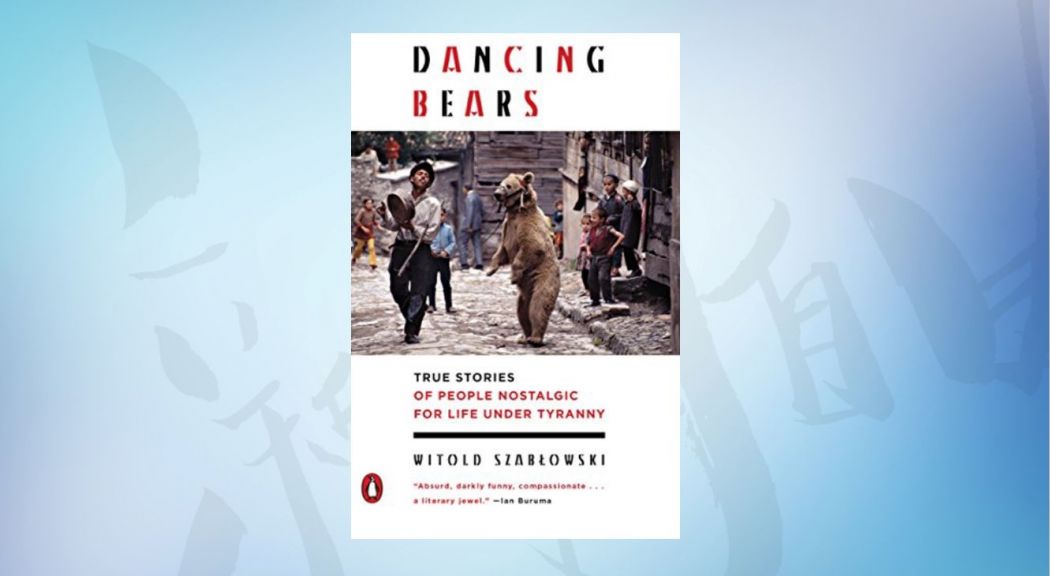
The Polish journalist Szabłowski travels through Poland, Ukraine, Georgia, Estonia, Albania, Serbia and Greece and as far afield as Cuba surveying the ruins of Communism, with a particular interest in the psychology of people who yearn for those “good old days”.
The metaphor of the title is of bears trained by Bulgarian Gypsies to dance. After the fall of Communism, the bears were released, but even today, when the bears see a human, they get up on their hind legs to dance.
Szabłowski’s prose is full of cutting humour, and perhaps being Polish himself, he feels more at liberty to poke fun at “his own”, but Sophie Pinkham, in her excellent review, finds the book’s central analogy borders on demeaning. When the present isn’t so great, it’s not hard to understand nostalgia.
The Right to Have Rights, Stephanie DeGooyer, Alastair Hunt, Lida Maxwell, Samuel Moyn, Astra Taylor (Verso) published in February

Five scholars explore the meaning of Hannah Arendt’s renowned formulation, “the right to have rights”, with each attending to one aspect of the evocative phrase, which, at its simplest, connotes a skeptical attitude to the inherent optimism of the human rights project.
Arendt’s point was that before you talk about rights, you need to talk about the right to have rights, who’s got them, who doesn’t, and why. Arendt’s first thought was of her own background as a stateless person and that it wasn’t human rights that got her out of Europe to America and thereby saved her.
Arendt therefore believed the right to have rights was contingent on belonging to a political community.
I’m a bit skeptical of the critiques in this volume, focused as they are on the treatment of recent refugees, as they seem to presume that those refugees don’t have rights. Indeed, the international human rights system asserts and guarantees their rights under multiple treaties.
Of course, whether or not their right are respected is another matter. Here is an essay by two of this book’s authors which articulates the main argument of the book.
Redemption: Martin Luther King Jr.’s Last 31 Hours, Joseph Rosenbloom(Beacon Press)
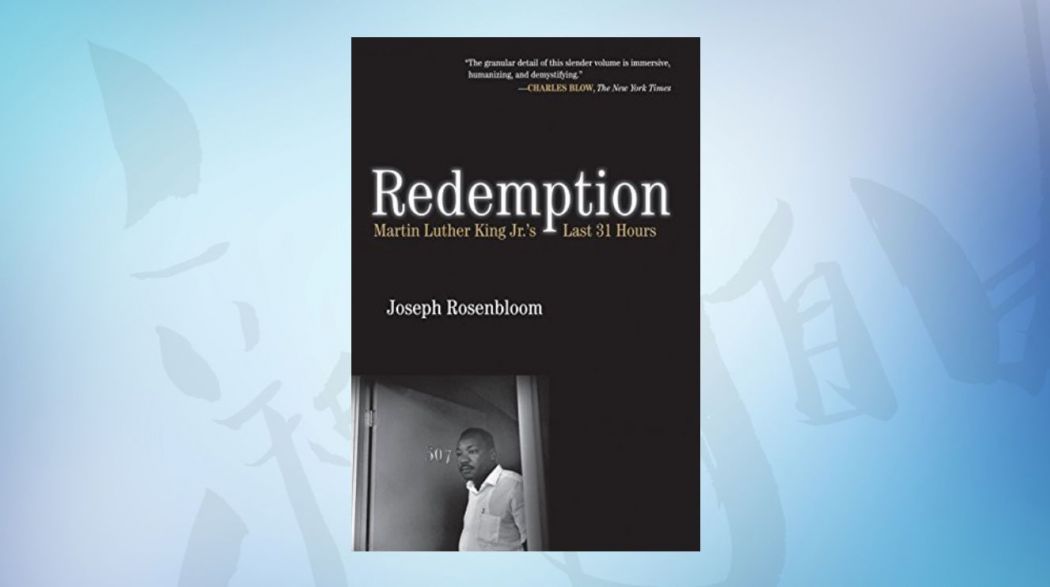
The ad copy says it much better than I can: “At 10:33 a.m. on April 3, 1968, Dr. Martin Luther King, Jr., landed in Memphis on a flight from Atlanta. A march that he had led in Memphis six days earlier to support striking garbage workers had turned into a riot, and King was returning to prove that he could lead a violence-free protest.
King’s reputation as a credible, non-violent leader of the civil rights movement was in jeopardy just as he was launching the Poor Peoples Campaign. He was calling for massive civil disobedience in the nation’s capital to pressure lawmakers to enact sweeping anti-poverty legislation. But King didn’t live long enough to lead the protest. He was fatally shot at 6:01 p.m. on April 4 in Memphis.”
In the last 31 hours and 28 minutes of King’s life, he “was exhausted from a brutal speaking schedule. He was being denounced in the press and by political leaders as an agent of violence. He was facing dissent even within the civil rights movement and among his own staff at the Southern Christian Leadership Conference. In Memphis, a federal court injunction was barring him from marching. As threats against King mounted, he feared an imminent, violent death. The risks were enormous, the pressure intense.”
The adulation that has accumulated around his iconic image in subsequent years is very different from views of him at the time of his death now half a century ago.
